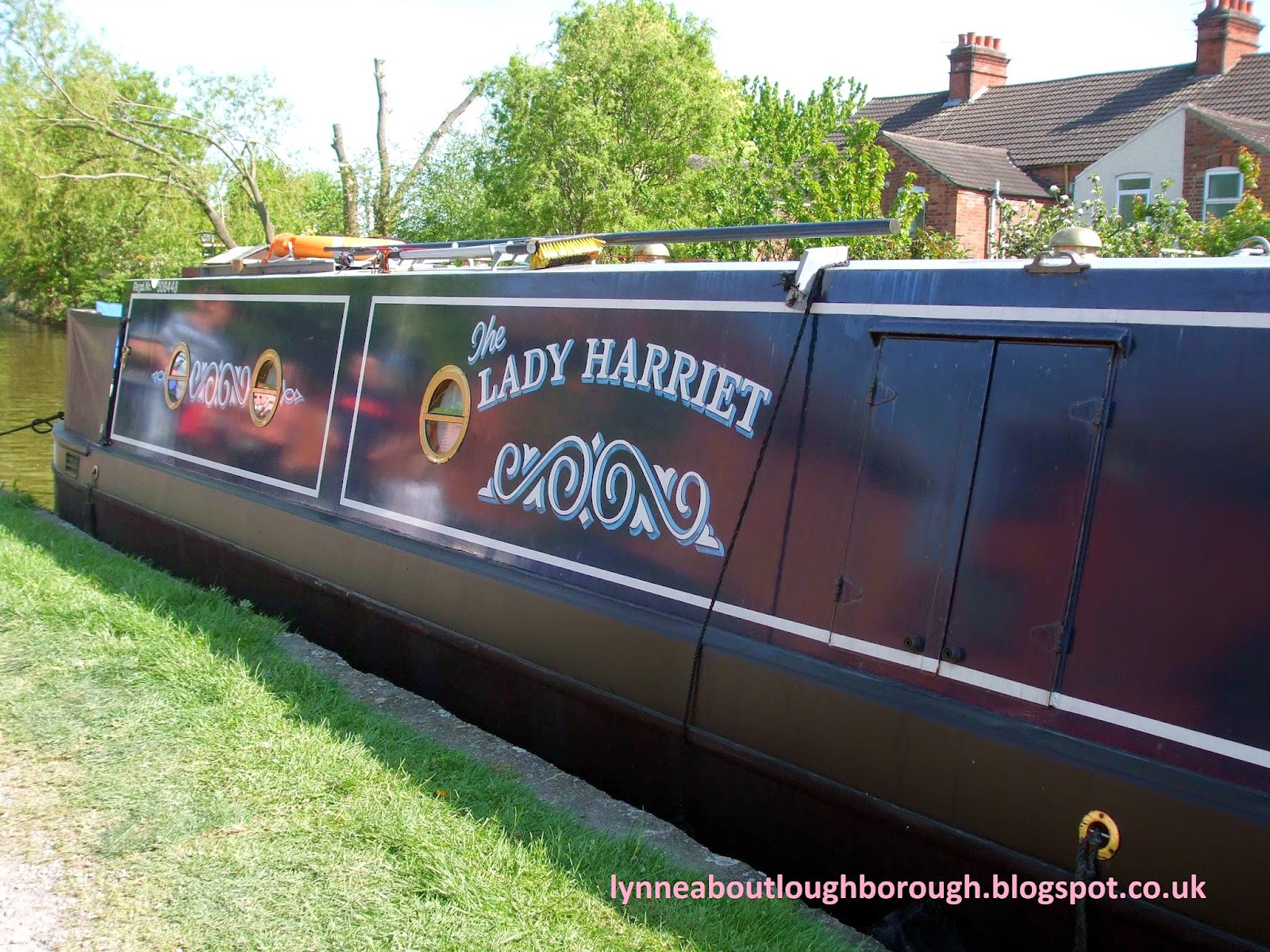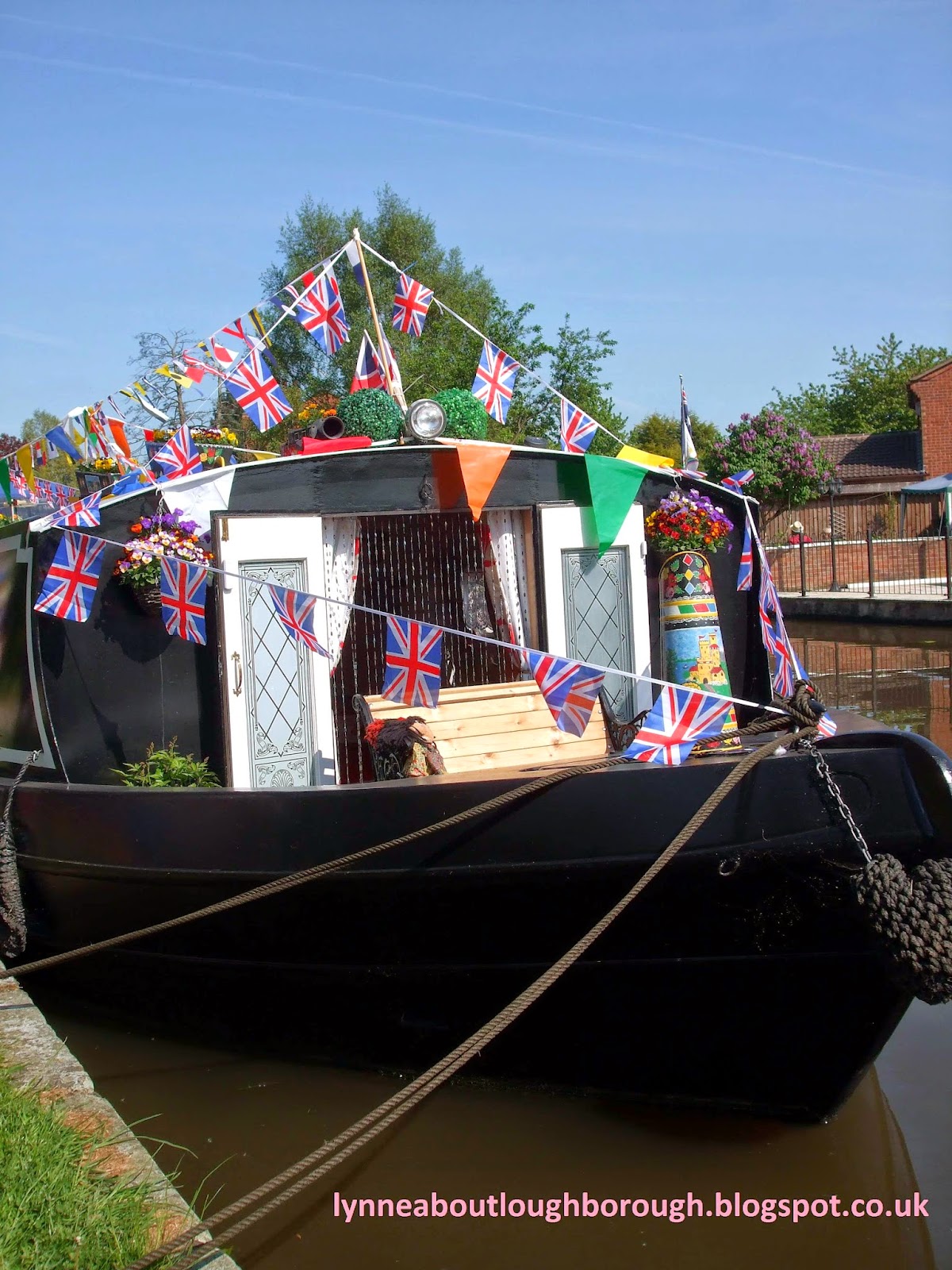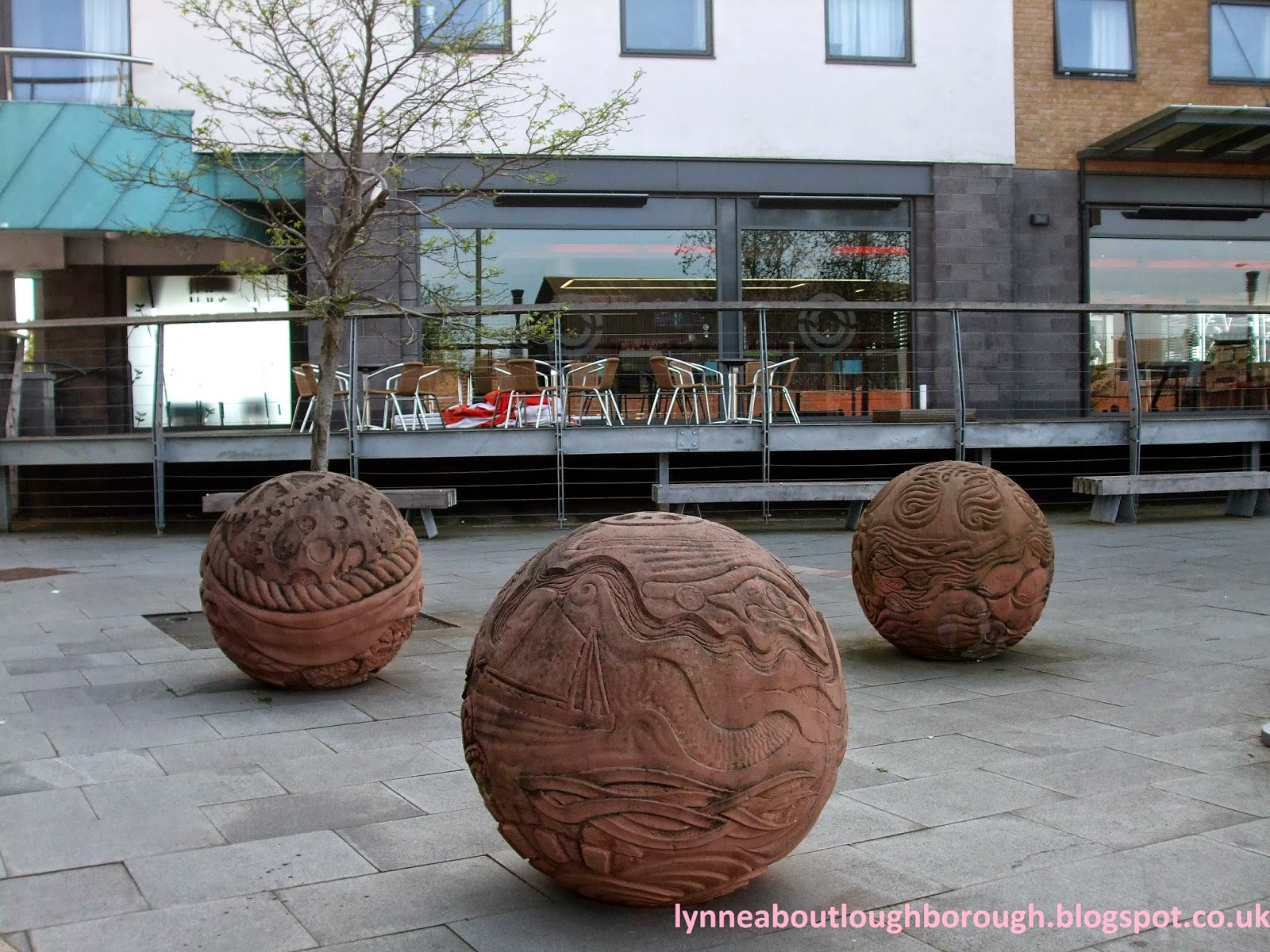 |
| The Dishley Millennium mosaic. |
In short, a pioneering, 18th century
Leicestershire gentleman farmer! Interested to know more? Read on!
A couple of weeks ago, I went on a walk, led by a friend of
mine, around the farm where Robert Bakewell did much of his pioneering farming.
The estate is privately owned, and arrangements had been made with the tenant
farmers to allow a group of interested folk to come and visit the estate
that had been so important in the early days of the agricultural revolution.
The weather started off looking promising, but much of the walk took place in
heavy rain, although this in no way dampened the spirits of the enthusiasts who
had turned out for this exciting walk!
So, Robert Bakewell (1725-1795) was the son of Robert
Bakewell, the grandson of Robert Bakewell, and, if the sources I have consulted
are correct, the great-grandson and great-great-grandson of Robert Bakewell!
As Wikipedia might put it, here's some disambiguation:
 |
| Sign at the entrance to Dishley Grange |
Our Robert Bakewell inherited Dishley Grange (formerly the
Grange to Garendon Abbey), a farm of about 440 acres, a quarter of which was
arable land, from his father when the latter died in 1760. The farm was owned
by Sir Ambrose Phillips, and the Bakewells were tenant farmers, being granted a
3-generation lease, as was common practice at the time. Before taking over the
running of the farm from his father, Bakewell had been travelling around
England, Europe and the Low Countries learning about farming methods, and
absorbing everything he saw, before serving an apprenticeship with his father
from about 1855, and finally taking over the running of the farm when his
father died.
At the time when Bakewell inherited the farm, things were
changing in Britain. Until the time of the Enclosures Act (around 1750) people
were able to graze their own animals and grow their own crops on land where
they lived, but this was not an efficient way of providing for what was a
growing population. More food was needed, so farming methods began to change in
order for the farmers to farm more efficiently. Also, animals had previously
been an integral part of the family, and people worked and slept with their
animals.
There seem to have been several aspects of farming that
Robert was interested in, and developed:
Animal breeding
Prior to Bakewell’s time, male and female animals were kept
in the same fields and allowed to breed naturally. On his travels, Bakewell had
observed that it was possible to change inherited characteristics of animals,
if their breeding was controlled. So, he began by separating out his males from
his females, keeping them in different fields and allowing the male to breed
with specific females only, so as to accentuate certain characteristics.
To help feed a growing population, Bakewell was interested
in producing animals with more meat. Up until this time, sheep, for example,
had been reared predominantly for their wool, but Bakewell used his breeding
“in and in” techniques to produce the New Leicester (or Dishley) sheep, that,
although delicately boned, were big, with fatty forequarters, and good quality,
long, coarse wool. From accounts I’ve read, it appears that Bakewell crossed
Old Lincolnshire sheep (possibly the Lincoln Longwool) with the best Leicester
or Ryland sheep. Apparently, the New Leicesters produced 2lbs of meat where
there had previously only been 1lb and the average dead weight of sheep
increased from 12.7kg in 1710 to 36kg in 1795.
Bakewell also applied his breeding principles to cattle, and
managed to produce a much larger cow, although its meat was somewhat fattier,
and its milk was poorer. He apparently used Longhorns (possibly from
Warwickshire) to breed with Lancashire (possibly Westmoreland) bulls.
As if this were not enough, Bakewell also improved the
draught horse, the Black Carthorse, or Leicestershire Black, which was the
forerunner of the Shire horse. These horses were bred for their strength, and
it is widely reported that where other farmers needed between for and seven
horses to pull their ploughs, Bakewell only needed to use two.
Some of the sources I read also made mention of pig rearing,
but I have not found any evidence of this, but I wouldn’t be surprised if this
was also something Bakewell was involved in.
Some of Bakewell’s famous animals are Twopenny the Bull,
Twopounder the Ram, and the Black Horse called “K”, and the horse called “G”,
which was a favourite of George III.
In 1783 Bakewell formed the Dishley Society to protect the
purity of his stock, and to help other farmers improve their livestock.
Bakewell was also one of the first farmers to hire out his
male animals – stallions, bulls and rams - for mating. Often, rams were hired
out for a whole season, and while in 1760 the cost was simply a few shillings
per season, by 1770 this had been raised to 25 Guineas, and Twopounder for
£1200.
In the early days of his work, Bakewell would preserve
skeletons and pickle carcasses of various specimens of his animals in order to
better study them and assess their characteristics. He was initially also quite
secretive about his work, presumably because in-breeding was frowned upon by
the church.
Crop management techniques
The land that Bakewell inherited was very wet, and sloped
down towards the river. He took advantage of this, diverting the brook and
creating canals, which meant that he could improve the quality of his
grasslands by allowing them to be slightly flooded, which in turn meant that he
was able to cut his grass four times a year – the extra one being in the
Spring, which meant that his cattle could be grazed, and therefore fattened
earlier in the year - rather than the three cuts which was more usual. He also
set up different parcels of land to experiment with different manuring
techniques and with different levels of flooding.
The canals also served a mill, and were also used to
transport livestock feed, in the form of turnips, which were thrown into the
canal at the high end and they floated down to the end of the route, where they
were stopped by a grating, being collected clean and ready to be stored and
used later to feed the animals.
Bakewell also sowed his seeds using the seed drill system
(as pioneered by Jethro Tull) rather than the dispersal system which was the
most common, but most unreliable way, and used a horse hoe to keep the ground
clean. Taking advantage of the wet ground, Bakewell planted many willow trees,
which were trimmed about every seven years, and were used to make things like
rake handles, and sack bottoms were made from the willow tree trimmings.
Bakewell also had a pond which he kept filled with fish, and water that drained
from the yard of the house were channelled into the brook to help with the
irrigation.
Manuring techniques
In his efforts to improve the efficiency of his farm through
his land, his animals and his techniques, Bakewell created animal stalls with
double stalls, which meant that he was able to collect manure from his animals,
and watered it down to make a liquid manure to improve the quality of his land.
Bakewell and religion
Bakewell was a Unitarian, and a trustee of the Unitarian
Church in Loughborough (which was somewhere along Warner’s Lane) and in
Mountsorrel. Unitarians were a non-conformist group and, as such, were not
widely accepted until after the Act of Toleration in 1689. This meant that
although they became recognised and allowed to build their own chapels, there
were many restrictions on them. So, for example, Unitarians were not allowed to
go to university, nor to be JPs or hold any state or civic office.
The effect of this was that Unitarians often worked and
socialised with other Unitarians and often a Unitarian married another
Unitarian. At one time (and I’m not sure if this is still the case) Unitarians
could only be buried in Church of England burial grounds. In the grounds of
Dishley Grange is the remains of Dishley Church, which fell out of use in about
1854 when the Thorp Acre Church was built. In about 1882 the church was mostly dismantled,
but some restoration work appears to have been undertaken in about 1919.
Unfortunately, despite his success with animal breeding and
new farming techniques, Bakewell was not particularly wealthy, and was indeed
at one time bankrupt. There may perhaps be a number of reasons for this: He
entertained lavishly, and probably beyond his means; his experimentation was
expensive; there were often times when others did not pay the amount due for
the lease of his rams; wool was at one point selling for a fraction of its
highest costs, and war with America had reduced the value of some produce.
Bakewell today
In 1974, the Robert Bakewell School was built in Loughborough, and was extended in 1980. This is a popular primary school situated in Barsby Drive, an area which was once part of the parish of Thorpe Acre, of which I believe Dishley was a chapelry.
I don’t know when the original Dishley Society was
disbanded, but the New Dishley Society was formed in 1994, to ensure that the
bicentenary in 1995 was recognised. The New Dishley Society aims:
 |
| The blue plaque on Warner’s Lane |
“to promote the memory of Robert Bakewell of Dishley Grange
(1725-1795), and of his contemporaries and students of his methods. It aims to
disseminate knowledge of his work and appreciation of his pioneering legacy in
the breeding of improved farm livestock and better crop management. It supports
research into the revolutionary agricultural techniques of the eighteenth and
early nineteenth centuries and into the men who developed these techniques.”
On Wednesday 29th October, 2008, a blue plaque, commemorating
“Robert Bakewell, Livestock Breeder”, was placed, by the borough council, on a
building in Warner’s Lane, Loughborough, that building being closest to the site
of the Unitarian Chapel of which Bakewell (and his father before him) was a trustee.
2009 saw the completion of the Robert Bakewell halls of residence at Loughborough University, and in 2012, Brooksby Melton College honoured the memory of Robert Bakewell, after whom one of their halls was already named, by unveiling a plaque and storyboard outside the aforementioned hall.
In Loughborough itself, the Belton Road industrial estate is notable for naming its roads after local firms (for example, Cotton Way and Messenger Close) but there is indeed also a Bakewell Road.
 |
| Mother and calves at Oakley Grange March 2014. |
Up at Oakley Grange, between Hathern and Shepshed, the traditional of Longhorn breeding is carrying on as descendants of Bakewell’s Longhorn cattle are still being bred, and Leicester Longwool sheep are still bred in Yorkshire, as well as other parts of the UK, there also being an association specifically focussed on them.
That’s all for now, but do call back to lynneaboutloughborough next week for a photographic walk through Dishely Grange Farm.
* Over in Norfolk, Robert Bakewell’s work was known to one
Thomas William Coke (1754-1842, first Earl of Leicester, seventh creation) who
had a large estate. He is remembered mostly as an agricultural reformer, who
was influenced by Bakewell’s work, rather than for his work as an MP.
** Coincidentally, Robert Bakewell, ironsmith, also had
connections with one Thomas Coke (1674-1727), this particular Thomas Coke being
the owner of Melbourne Hall, in south Derbyshire, an architect and an MP for
Derbyshire. The “birdcage” in the gardens of Melbourne Hall were created by
this Robert Bakewell.














































































